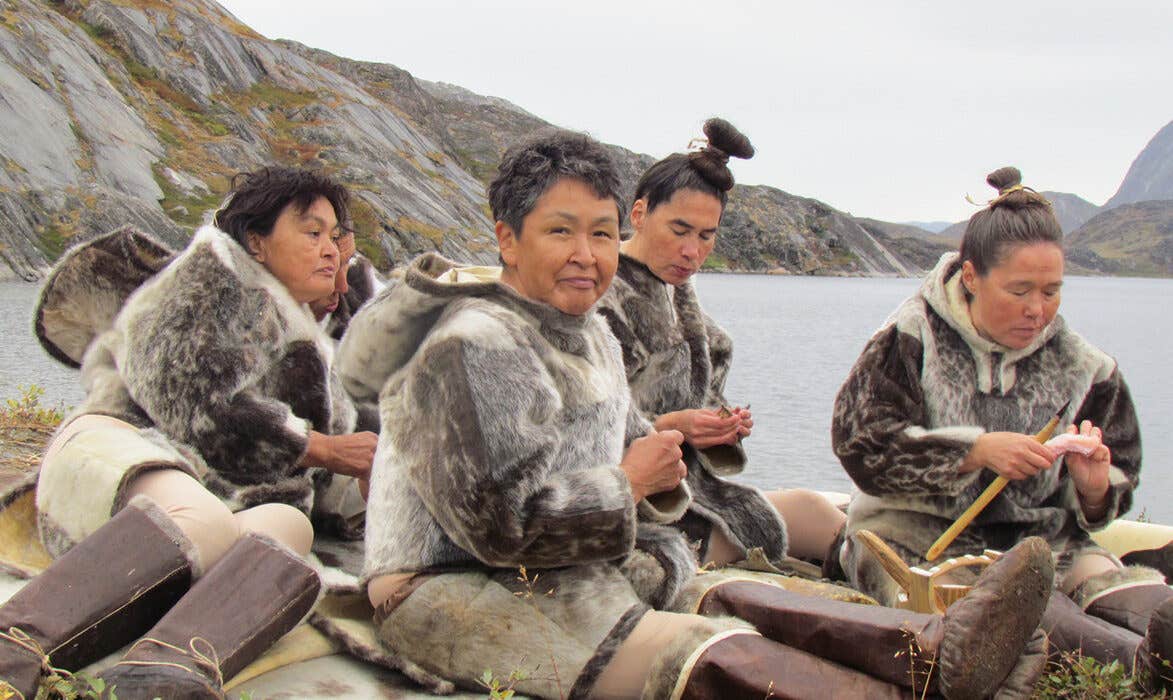Genes and DNA reveal why heart disease risk is rising in Greenland
Greenland study links Arctic-adapted genes to strong shifts in blood proteins, reshaping heart and diabetes risk research.

 Edited By: Joseph Shavit
Edited By: Joseph Shavit

Inuit genetic variants in Greenland strongly control blood proteins tied to inflammation and heart health, revealing new clues to diabetes and cardiovascular risk. (CREDIT: Shutterstock)
Greenland has changed quickly in the past 25 years. Along with new foods, jobs and habits has come a sharp rise in type 2 diabetes and heart disease. For many people there, these illnesses feel recent and deeply personal, arriving within a single generation. Scientists already knew that part of this risk traces back to genetic traits that helped Inuit ancestors survive long, freezing winters on diets rich in marine fat and protein. What remained unclear was how those genes turn into real disease in real bodies.
A new study starts to fill that gap. By tracking how DNA shapes the proteins flowing through the blood of Greenlanders, researchers reveal a detailed picture of how ancient Arctic adaptations now collide with modern life.
Reading the Body’s Protein Signals
Your genes do not act alone. Between DNA and disease sit thousands of proteins that guide inflammation, metabolism, immunity and heart function. They are like traffic lights that tell cells when to speed up, slow down or call for help. If a genetic variant shifts both the level of a protein and the risk of illness, that protein often plays a direct role in the disease process.
In this study, an international team analyzed blood from 3,707 adults sampled across Greenland between 1998 and 2019. The average age was almost 48 years, and just over half were women. Using advanced laboratory panels, the scientists measured 177 proteins tied to inflammation and cardiovascular health. They then scanned the entire genome to find places where differences in DNA changed those protein levels in a noticeable way.
The team discovered 251 main genetic signals that altered at least one protein level, plus 48 additional signals layered on top. About 28% of these protein–gene links had never appeared in earlier work, which had focused almost entirely on people of European ancestry. Many of the strongest effects came from variants that are rare in Europe but common in Inuit ancestry.
“By understanding how genetic variants regulate proteins in the blood, we can identify new drug targets and understand why certain populations are more susceptible to specific diseases. This is especially important for populations like Greenland, where unique genetic adaptations that once provided survival advantages now contribute to elevated disease risks,” said Professor Torben Hansen from the Novo Nordisk Foundation Center for Basic Metabolic Research at the University of Copenhagen, who co-led the study.
Arctic Variants With Outsize Power
Some of the clearest stories in the data involve well known Arctic-adapted variants. One change in the CPT1A gene likely helped Inuit ancestors handle high fat, marine diets. In the new analysis, people carrying this variant had lower levels of 55 different proteins, many involved in inflammation and blood vessel health. That is a huge shift in the body’s signaling system, tied to a single genetic difference.
Another key variant sits in TBC1D4, a gene linked to how muscles respond to insulin. In Greenland, this single change helps explain up to 10% of all diabetes cases. The study shows that it also alters nine immune-related proteins, including several major inflammatory markers. That result suggests that this diabetes gene also reshapes the broader inflammatory environment inside the body.
The researchers also found a new genetic variant that changes levels of the inflammatory protein interleukin-6, or IL-6. People with this variant had higher IL-6 and a 31% higher risk of cardiovascular disease events. This link was measured in 4,578 Greenlanders with long term health data, making it one of the most direct connections in the study between a protein signal and real disease outcomes.
Stronger Genetic Control Than in Europeans
To see how unusual these effects are, the team compared Greenlandic results with data from an equally sized group of Europeans in the UK Biobank. On average, genes explained a similar share of protein variation in both groups, around 5%. But the details told a different story.
Greenlanders had more genetic variants that changed protein levels by very large amounts. For some proteins, like interleukin-27 and Galectin-9, a single variant explained 30% to 44% of the difference in levels between people. In Europeans, the strongest variants for the same proteins explained less than 20%. Several of the high impact changes in Greenlanders were completely absent in European datasets.
This pattern shows how an isolated, relatively small population can carry genetic traits that strongly shape biology, yet remain invisible in global databases. The study also found that many proteins are controlled by both nearby variants and distant ones, creating layered genetic networks that are only now coming into focus.
How the Study was Built
To assemble this map, scientists combined data from three large Greenland surveys covering 19 communities. Every participant had genetic information, protein measurements and basic health traits collected under strict ethical approvals and with written consent.
Proteins were measured using targeted panels that track dozens of markers tied to inflammation and heart disease. Genetic variation was captured with a multi-ethnic array designed to pick up Indigenous American and East Asian ancestry patterns, which overlap with Inuit ancestry. Whole genome sequencing from 447 people and global reference data helped fill in missing variants.
Because many people in Greenland are related, the team used models that account for family ties and shared ancestry. They looked at both additive effects, where each copy of a variant adds to its impact, and recessive effects, where two copies matter most. They also checked whether their strongest signals held up after adjusting for body mass index, which they did in more than 90% of cases.
Why Diverse Genomics Changes the Picture
Nearly all earlier studies of how genes control proteins involved people of European descent. This leaves large holes in what science knows about human biology. As co-first author Sara Stinson put it, “Indigenous and underrepresented populations have been largely excluded from genomic research. Without studying diverse populations, we miss critical pieces of human biology and perpetuate health disparities.”
By working closely with Greenlandic partners, including local health research centers and diabetes clinics, the team showed how Arctic-adapted genes influence whole suites of proteins tied to heart and metabolic health. They also confirmed that several variants already linked to cholesterol, glucose and weight in Greenlanders shift key protein markers such as ADAM-TS13, lipoprotein lipase and fibroblast growth factor 21.
At the same time, the researchers note real limits. They only studied 177 proteins, and the technology can sometimes misread proteins if a variant changes the exact spot where an antibody binds. Because most large genetic reference panels still come from Europeans, advanced tools that link proteins to disease, such as Mendelian randomization, remain difficult to apply without bias in Greenland.
Practical Implications of The Research
The work offers several concrete benefits for both Greenland and the wider world. By tying specific genetic variants to shifts in blood proteins and then to cardiometabolic traits, the study provides a roadmap for more tailored prevention strategies in Arctic communities. Health workers can better understand why some families face very high risks and which biological pathways matter most.
For global research, the findings highlight proteins like IL-6, IL-27, Galectin-9 and FGF-21 as promising targets for new drugs or risk tests. Variants that cause large changes in these markers can serve as natural experiments, helping scientists test whether altering those proteins might prevent disease.
The study also strengthens the case for including Indigenous and underrepresented groups in genomic projects. When you expand the range of people studied, you uncover strong genetic effects that can sharpen disease models for everyone, not just the community where they were first found. Over time, that knowledge can support fairer and more effective precision medicine.
As more diverse datasets grow, researchers can refine how they use genetic information to guide screening, treatment and lifestyle advice. The hope is that people in small, remote populations will see direct benefits from the science built with their help, rather than being left out of advances in genomic health.
Research findings are available online in the American Journal of Human Genetics.
Related Stories
- New AI model reveals key genetic, social, and lifestyle factors impacting skin cancer risk
- Researchers discover genetic cause of hearing loss and identify possible treatments
- Scientists use AI and optogenetics to make major breakthrough in Parkinson’s treatment
Like these kind of feel good stories? Get The Brighter Side of News' newsletter.
Rebecca Shavit
Science & Technology Journalist | Innovation Storyteller
Based in Los Angeles, Rebecca Shavit is a dedicated science and technology journalist who writes for The Brighter Side of News, an online publication committed to highlighting positive and transformative stories from around the world. With a passion for uncovering groundbreaking discoveries and innovations, she brings to light the scientific advancements shaping a better future. Her reporting spans a wide range of topics, from cutting-edge medical breakthroughs and artificial intelligence to green technology and space exploration. With a keen ability to translate complex concepts into engaging and accessible stories, she makes science and innovation relatable to a broad audience.



